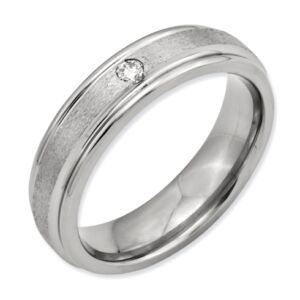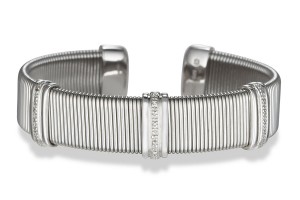
In recent years, prices in the precious metal market have, at times, resembled a roller coaster. However the overall trend is one where the price of Gold and Platinum has increased significantly. As a result of the higher prices for precious metals typically used in fine jewelry, a few alternative metals have begun to take center stage for some jewelry manufacturers. Note – alternative metals in this context do not mean different ‘colors’ of the same metal – i.e. the difference between rose, yellow and white gold.
Whether you’re looking at new craft jewelry pieces or contemporary modern designs, there are many alternative metals being used by jewelers today. Knowing the pros and cons of these metals will help you make informed purchases. For example, it is important to know, when buying a piece, if it can be repaired or resized if necessary. Read on for a brief listing of some of the alternative metals you are likely to see on the market today.
What are the alternatives to gold metal in jewelry?
The two most popular alternative metals you will currently see for men’s jewelry are Titanium and Tungsten. Both of these are less expensive than Gold and Platinum, though still more costly than Silver. At this point, neither Titanium nor Tungsten can be sized. Because of their popularity on the market, there are many manufacturers producing both Titanium and Tungsten specifically for the men’s wedding band market.
Titanium is incredibly lightweight and feels like an aluminum washer in terms of heft. Those who are not accustomed to wearing jewelry everyday often embrace this featherweight material.
Tungsten (when alloyed with carbide) is also lightweight and is often marketed as being hard to scratch. However, if you are coming in contact with metal or dense, hard surfaces on a regular basis, even Tungsten will eventually show wear and scratches.
Given their similar properties, the pros and cons in using Titanium and Tungsten’s for jewelry are alike.
- Pros – Both materials are relatively inexpensive, lightweight and somewhat resistant to scratching
- Cons – They cannot be cut or sized. Should the wearer gain or lose weight, a new ring must be purchased, as the original band cannot be re-sized. In case of emergencies – they generally must be broken or smashed off of the wearer’s hand. Whilst some new brands on the market can be cut by a jeweler’s saw, the majority would have to withstand a blow in order to dislodge a ring that is stuck.
Silver – Silver is the most commonly used metal outside of Gold and Platinum in the jewelry industry. Silver is significantly softer than Gold or Platinum making it less than ideal for intricate stone setting or engraving; it is more commonly used for less expensive jewelry. Silver has long been used for costume and fashion jewelry.
- Pro: Inexpensive and widely available. Can be cut, soldered and repaired by a jeweler.
- Con: Soft, bends easily in comparison to other precious metals.
Brass – Made of Copper and Zinc, this metal is widely found in costume and vintage jewelry. When Brass is polished it bears a striking resemblance to yellow gold.
- Pro: An inexpensive metal. Can be cut, soldered and repaired by a jeweler. Often resembles yellow gold when polished.
- Con: Can sometimes contain up to 2% of lead leading to potential health issues.
Copper – Known outside of jewelry for the beautiful green patinas that will develop over time, copper is starting to be seen in more ‘craft’ jewelry styles.
- Pro: Inexpensive and widely available. Offers an interesting red color.
- Con: A soft metal and as such can sometimes lose its shape.

Stainless Steel – Widely used for its sleek appearance, this material lends itself to contemporary designs. This is widely used in men’s jewelry.
- Pro – Maintains a sleek polish, and is difficult to scratch.
- Con – Cannot be sized, soldered or repaired by a jeweler.
These alternative metals have opened up the world of fashion jewelry to many different price demographics as jewelers and designers use new and non-traditional materials to create their pieces. This is an exciting time for jewelers and jewelry lovers alike! Have you recently seen contemporary jewelry made from alternative materials that you liked? Is this a look you feel you could incorporate into your style and collection?
